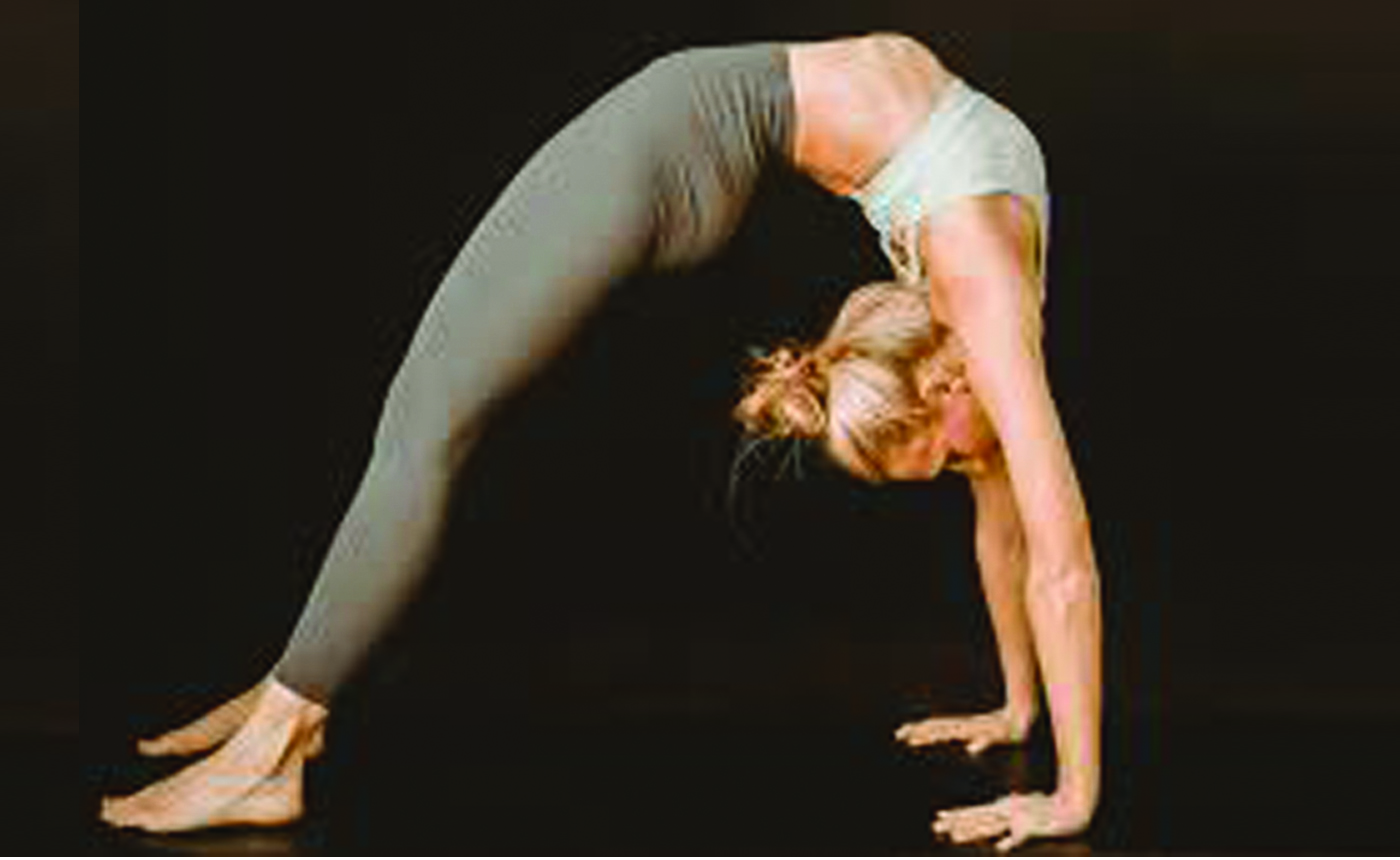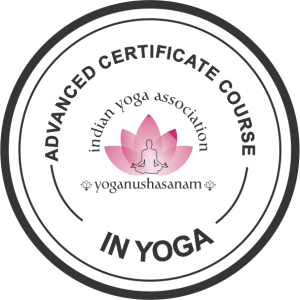Description
500 Hours Advance Certificate Course in Yoga – Training Fee and Certification Exam Fee.
Indian Yoga Association Membership Fee – “Yog-Prashikshak” (IYA Membership shall be given to candidates who have cleared the Advance Certificate Course in Yoga Internal and External Examination conducted by the Nayago School of Yoga)
Syllabus
Philosophy
Indian Philosophy: Astika & Nastika Darsanas, Common Characteristics of IP (a slightly deeper understanding).
Samkhya Darshana: Dukha Traya, Purusa & Prakrti, Avidya, Tri–Guna Theory, Names and Characteristics of 25 Tattvas, Kaivalya.
Yoga Darshana (Patanjali Yoga Sutras): Background of Patanjali, Names of 4 Padas, The Ashtangas, Sabija / Nirbija / Dharmamegha Samadhi, Antarayas and method to remove them, Vikshepa Sahabhuvas and method to remove them, Vrittis& methods to eliminate them, Klesas & methods to eliminate them, Cittaprasadana & Manasthithi Nibandhini techniques, Definition & description of Ishvara, Concept of Samapatti, Concept and examples of Siddhis / Vibhutis, Kaivalya.
Etymological Meanings & Definitions of ‘Yoga’
Meanings with Explanation: Yujir-yoge, Yuj-samyamneYuj-samadhi.
Definitions with Explanation: PYS Def Ch I – S: 2
Bhagavad Gita: Samatvam Yoga Uchyate, Yogaha Karmasu Kaushalam
Salient features of Indian Culture
Deeper understanding: Sanatana Dharma, Vaidic Dharma, Anekantavada, Ashrama Dharma, Purusharthas, Guru-Shishya Parampara, Karma & Law of Karma, Dharma, Spiritual culture (Adhyatmic Samskriti) / Materialistic culture (Bhautic Samskriti).
Basic Texts of Yoga
Patanjali Yoga Sutras: Over-view of 1st and 2nd Padas, Over-view of 3rd and 4th Padas, Sutras by heart, Definition (Ch:I S-2);, Ashtanga Yoga (Ch:II S- 29);, Asana (Ch:II S-46);, Pranayama (Ch:II S-49), Ashtangas of Yoga (Ch:II S-54) (Ch:III S-1, 2 &3), Cittaprasadana (Ch:I S-33 &34), Pratipaksha Bhavana (Ch:II S-33).
Hatha Pradipika (HP) &Gheranda Samhita (GS): Deeper Understanding of Hatha Yoga
Deeper understanding of Hatha Pradipika: Understanding of 4 angas, understanding of 15 Asanas, Understanding of Shat Kriyas, understanding of 8 Kumbhakas, Understanding of 10 Mudras, Badhak Tattva / SadhakTattva.
Deeper understanding of Gheranda Samhita: Understanding of Saptangas
Bhagavad Gita: Name of Author, No. of Chapters
Detailed understanding of: What is Karma Yoga? What is Bhakti Yoga?
Upanishads: Meaning of ‘Upanishad’, Names of 10 Main Upanishads, A few Upanishadic doctrines – 4 Mahavakyas, Panchamaya (Pancha kosha) theory.
Vedas: Meaning of ‘Veda’, Names of 4 Vedas, Four parts of each Veda, Veda Angas & Upa Vedas.
Puranas: Name of Author, Basic understanding of Puranas, Names of 18 Puranas, Purushartha theory.
Anatomy & Physiology: Medical Science & Yoga
A. Anatomy & Physiology as per Medical Science : Names of 9 Main Systems and Organs in each system, Other Main Organs (Example: Eyes, Ears, etc.), Main Functions of above, Effects of Yoga Practices on the above systems and organs.
B. Yogic Anatomy & Physiology as per Yoga: Concept of Prana, Names and Functions of the Pancha Pranas and Upa-Pranas, Concept of Nadi& names of Nadis, Significance of Ida, Pingala & Sushumna Nadis, Ashta Chakras and their Significance, Names of Granthis& Chakra awakening, Names of Endocrine glands corresponding to Chakras, Kundalini & its awakening and practices (e.g. Bandhas, Shaktichalana Mudra, etc.) for same.
Human Psychology as per Yoga
Personality theories: Deeper understanding of personality of according to Tri- Gunas, the 5 Chitta Bhumis & their Guna orientation, Understanding of Personality as per Samkhya Darsana: Prakrti (Sthula, Sukshma& Karana Shariras) + Purusa, Panchamaya (Panchakosha) theory as already considered in earlier section.
Concept of Mind: Names & functions of elements of Antahkarana in Samkhya: Buddhi, Ahamkar & Manas.
Concept of Citta in PYS: Distractions / Disturbances of Mind – 9 Antarayas as per PYS, Shad Ripu as per Upanishads (Kama, Krodha, Lobha, Moha, Mada&Matsarya), Samskaras (conditioning) / Vasanas /Klesas, etc.
Mind Control Techniques: Yamas, Niyamas, Pranayama, Meditation, Pranavajapa, EkTattvaabhyasa, Cittaprasadana techniques, Pratipaksha Bhavana, Relaxation Practices (Shavasana, Yoga Nidra, etc.)
Diet: Mithahar as per Hathayoga Pradipika;
Bhagavad Gita: Diet, rest, relaxation, exertion, etc
Elaboration of Yogic Lifestyle
Introduction to Ayurveda: Meaning of ‘Ayurveda’, 3 Doshas, Concepts of Health (Swasthya), Mala; Dhatus; etc.
Teaching of Yoga: Teaching Methods (Instruction; Observation; Demonstration; Correction), Teaching Aids, Communication Skills, Verbal & Non-verbal, Ideal Qualities of Teacher, Conducive Environment, Safety measures, Guideline as regards framework of Professional Practice.
Sukshma Vyayama / Preparatory Practices / Sandhi Chalanakriya: Institution-specific
Shuddhi Kriyas: Dhauti: VamanDhauti, Danda Dhauti, Vastra Dhauti; Agnisaar, Neti: Jal Neti; Sutra Neti, Tratak, Kapalbhati, Nauli, Theoretical Knowledge as regards Basti.
Asanas
Five Meditative Asanas: Siddhasana, Padmasana, Svastikasana, Vajrasana, Veerasana.
Seven Standing Asanas: Tadasana, Ekpadasana, Vrikshasana, Utkatasana, Trikonasana, Garudasana.
Five Kneeling Asanas: Ushtrasana, Marjarasana, Vyahgrasana, Shashankhasana, Suptavajrasana.
Eight Sitting Asanas: Bhadrasana, Simhasana, Gaumukhasana, Vakrasana, Parvatasana, Paschimottanasana, Matsyendrasana, Ardhamatsyendrasana.
Five Prone Asanas: Bhujangasana, Shalabhasana, Dhanurasana, Naukasana, Makarasana.
Seven Supine Asanas: Pavanmuktasana, Setubandhasana, Matsyasana, Uthitapadahastasana, Halasana, Chakrasana, Shavasana.
Two Inverted Asanas: Sarvangasana, Shirsasana.
Suryanamaskar: Suryanamaskar (Traditional with 12 Poses and accompanying Mantras)
(Can be School- Specific).
Pranayama: Sectional Breathing, Yogic Breathing, Nadishodhana.
Kumbhakas with Bandhas: Suryabhedana, Ujjayi, Shitkari, Shitali, Bhastrika, Sagarbha & Agarbha Nadi-shodhana Pranayama.
Bandhas: Mulabandha, Uddiyana Bandha, Jalandhar Bandha, Jivha Bandha, Maha bandha.
Mudras: Chin / Jnana Mudra, Padma Mudra, Agochari Mudra (Nasikagra Drishthi), Shambhavi (Bruhmadhya Drishthi), Viparitakarani, Khechari, Mahamudra, Mahavedha Mudra, Ashvini Mudra, Yoga Mudra, Shanmukhi Mudra, Shakti chalana Mudra, Brahma Mudra.
Mantras: Pranava japa, Shanti Mantra: Can be institution specific.
Meditation: Institution-specific
Teaching Practice: Institution-specific





Reviews
There are no reviews yet.